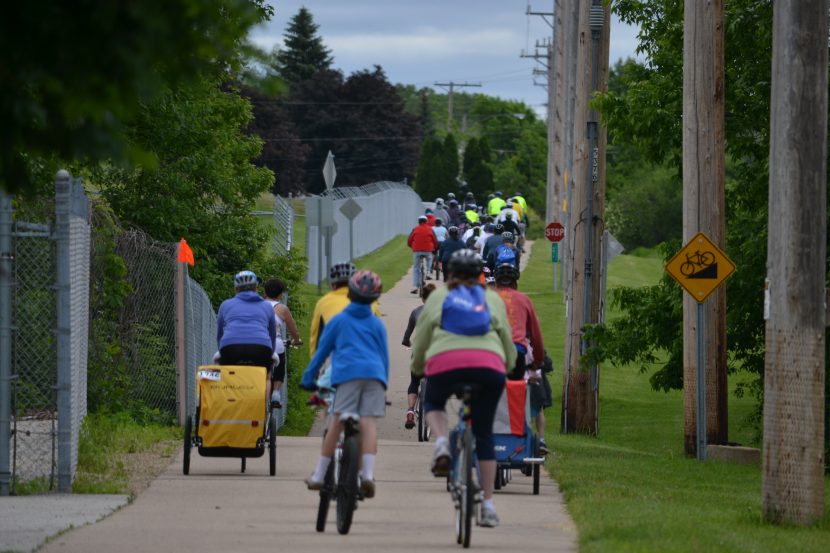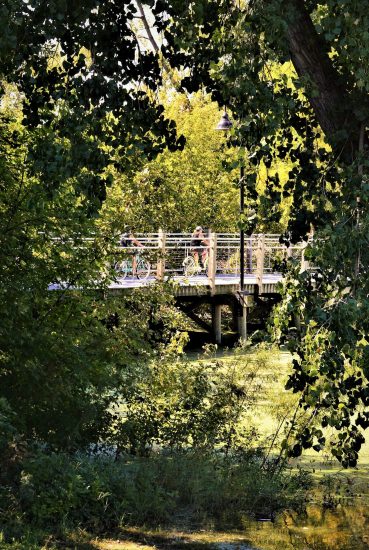
Environmental Justice and Bike Policy Advocacy
Most of us (I hope!) are on board with the idea that environmental policy is broader than just the conservation of wild spaces and the wise use of limited natural resources. Environmental policy also involves the choices we make as communities about urban design, economic incentives, and transportation choices. The concept of environmental justice (EJ) urges us to continue expanding our notion of what falls under the environmental policy umbrella.
EJ is based on the principle that environmental harm is disproportionately borne by marginalized and vulnerable communities, while those with the most privilege are shielded from the worst effects. At its most basic, EJ is the idea that we can’t separate environmental issues from race, gender, class, physical ability, sexual identity, immigrant status, or other facets of identity. EJ often comes up in discussions about issues like the location of emissions-spewing industrial sites, which neighborhoods are chosen for waste disposal sites, and which people will suffer from the most severe consequences of climate change.
But EJ applies to bike policy, advocacy and infrastructure too – often in unexpected and under-scrutinized ways.

In the books Bike Lanes are White Lanes (https://www.nebraskapress.unl.edu/nebraska/9780803276789/) and Bicycle/Race (https://microcosmpublishing.com/catalog/books/7833), Melody Hoffmann and Adonia Lugo, respectively, lay out the connections between bikes and environmental justice.
For example, we need to ask ourselves which users our cities have in mind when they’re designing and building new bike lanes. Where does a bike lane master plan assume users live and where does it assume they want to go? Does it assume most people are using bikes for recreation, or does it recognize that riders are also using bike infrastructure for things like grocery shopping and commuting to work? And, most importantly, which residents’ voices and perspectives are historically absent from the decision-making process?
As Hoffmann and Lugo point out in an article from 2014 (http://www.anthrojournal-urbanities.com/docs/tableofcontents_6/5-%20Hoffmann-Lugo.pdf), “We argue that advocates and policymakers who frame bicycle facilities as amenities that will attract a creative class population ignore and potentially undermine bicycle mobility by those who do not fit into this desired group of citizens…In this way, bicycle advocacy illustrates the trend toward high quality public spaces being sold as luxury amenities.”
Cities, planners and policy-makers can do better, and the principles of inclusive design and the principles of environmental justice go hand-in-hand. In my city of Appleton, for example, the Trails Master Plan lays out an agenda for expanding and connecting the city’s network of greenways (http://www.sehinc.com/sites/default/files/file-attachments/news/Appleton-Trails-Master-Plan_FinalReport_2017-01-04.pdf). In that sense, it’s a lot like the planning documents that most cities develop (and too few of us read!)

But Appleton’s plan also includes a section that exemplifies the principles of environmental justice. In a section titled “Equity Analysis,” the report observes that neighborhoods with a higher proportion of poor residents or people of color have been historically underserved by bike infrastructure. The solution, however, is bottom-up, inclusive planning with the affected communities. As the plan notes, “populations with limited English proficiency may be less likely to engage in the public process and may have different needs that those who do provide feedback. Therefore, additional outreach can be done in these areas to reach a wider range of the population and better understand how trail facilities can meet the needs of all residents in Appleton.”
So where do we go from here? As communities of advocates and policy-makers, we can start by incorporating EJ principles deliberately and explicitly. Two starting points are inclusive community input and diverse decision-making bodies. In a public input session, we should ask what the barriers to participation are and how we’re working to remove them. In our organizations, we should ask which perspectives, experiences, and voices are not in the room where decisions are made.